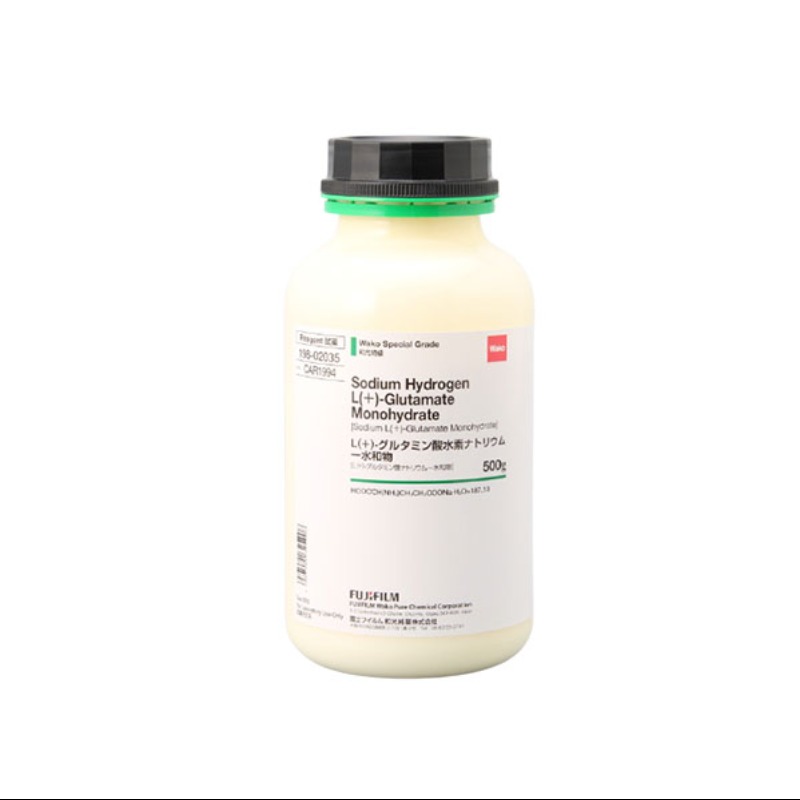Sodium hydrogen glutamate
এই পদার্থটি নিম্নলিখিত ক্ষেত্রগুলিতে ব্যবহৃত হয়: মিশ্রণগুলি এবং / বা পুনঃ-প্যাকেজিং প্রণয়ন, বৈজ্ঞানিক গবেষণা ও উন্নয়ন, খনন ও স্বাস্থ্যসেবাগুলি। এই পদার্থটি উত্পাদন করতে ব্যবহৃত হয়: রাসায়নিক এবং বৈদ্যুতিক, বৈদ্যুতিন এবং অপটিক্যাল সরঞ্জাম।
Monosodium glutamate (MSG), also known as sodium glutamate, is the sodium salt of glutamic acid. MSG is found naturally in some foods including tomatoes and cheese in this glutamic acid form.[2][3] MSG is used in cooking as a flavor enhancer with an umami taste that intensifies the meaty, savory flavor of food, as naturally occurring glutamate does in foods such as stews and meat soups.[4][5]
MSG was first prepared in 1908 by Japanese biochemist Kikunae Ikeda, who was trying to isolate and duplicate the savory taste of kombu, an edible seaweed used as a base for many Japanese soups. MSG balances, blends, and rounds the perception of other tastes.[6][7] MSG is commonly used and found in stock (bouillon) cubes, soups, ramen, gravy, stews, condiments, savory snacks, etc.
The U.S. Food and Drug Administration has given MSG its generally recognized as safe (GRAS) designation.[8] It is a popular belief that MSG can cause headaches and other feelings of discomfort, known as "Chinese restaurant syndrome", but blinded studies show no such effects when MSG is combined with food in normal concentrations, and are inconclusive when MSG is added to broth in large concentrations.[8][9][10] The European Union classifies it as a food additive permitted in certain foods and subject to quantitative limits. MSG has the HS code 29224220 and the E number E621.
Pure MSG is reported to not have a highly pleasant taste until it is combined with a savory aroma.[12] The basic sensory function of MSG is attributed to its ability to enhance savory taste-active compounds when added in the proper concentration.[6] The optimum concentration varies by food; in clear soup, the "pleasure score" rapidly falls with the addition of more than one gram of MSG per 100 mL.[13]
The sodium content (in mass percent) of MSG, 12%, is about three-fourths of that in sodium chloride (75%), due to the greater mass of the glutamate counterion.[14] Although other salts of glutamate have been used in low-salt soups, they are less palatable than MSG.[15] "MSG might even promote healthy eating, [food scientist Steve Witherly] hypothesizes, by not only making kale more delicious but also letting you get away with using less salt."[16]
The ribonucleotide food additives disodium inosinate (E631) and disodium guanylate (E627), as well as conventional salt are usually used with monosodium glutamate-containing ingredients as they seem to have a synergistic effect. "Super salt" is a mixture of 9 parts salt, to one part MSG and 0.1 parts disodium inosinate and disodium guanylate.

Login To Comment